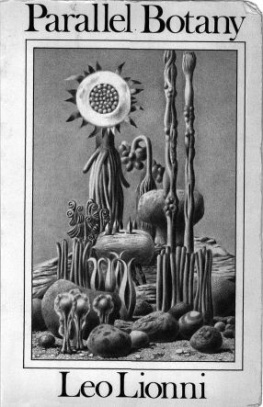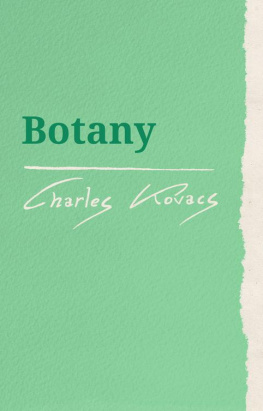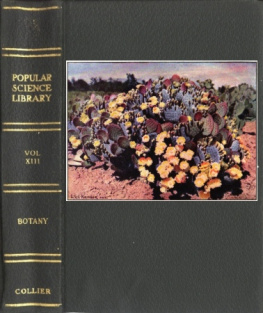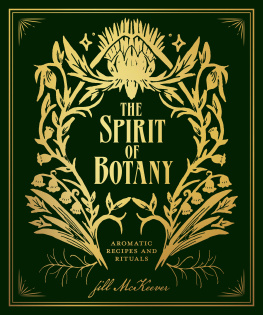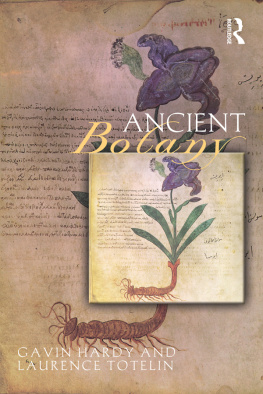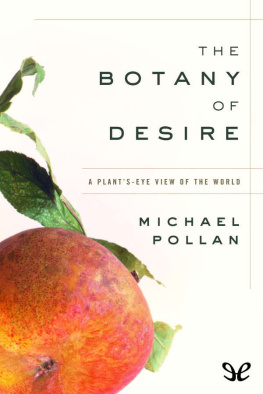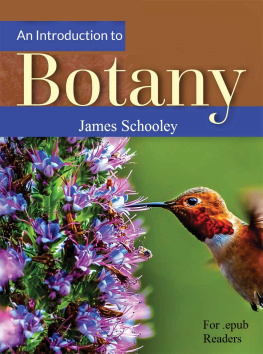Leo Lionni - Parallel Botany
Here you can read online Leo Lionni - Parallel Botany full text of the book (entire story) in english for free. Download pdf and epub, get meaning, cover and reviews about this ebook. year: 1978, genre: Detective and thriller. Description of the work, (preface) as well as reviews are available. Best literature library LitArk.com created for fans of good reading and offers a wide selection of genres:
Romance novel
Science fiction
Adventure
Detective
Science
History
Home and family
Prose
Art
Politics
Computer
Non-fiction
Religion
Business
Children
Humor
Choose a favorite category and find really read worthwhile books. Enjoy immersion in the world of imagination, feel the emotions of the characters or learn something new for yourself, make an fascinating discovery.
- Book:Parallel Botany
- Author:
- Genre:
- Year:1978
- Rating:5 / 5
- Favourites:Add to favourites
- Your mark:
- 100
- 1
- 2
- 3
- 4
- 5
Parallel Botany: summary, description and annotation
We offer to read an annotation, description, summary or preface (depends on what the author of the book "Parallel Botany" wrote himself). If you haven't found the necessary information about the book — write in the comments, we will try to find it.
Leo Lionni: author's other books
Who wrote Parallel Botany? Find out the surname, the name of the author of the book and a list of all author's works by series.
Parallel Botany — read online for free the complete book (whole text) full work
Below is the text of the book, divided by pages. System saving the place of the last page read, allows you to conveniently read the book "Parallel Botany" online for free, without having to search again every time where you left off. Put a bookmark, and you can go to the page where you finished reading at any time.
Font size:
Interval:
Bookmark:
Leo Lionni
Parallel Botany

PARALLEL BOTANY
 |
PL . I A garden of parallel plants
LEO LIONNI
PARALLEL BOTANY
Translated by PATRICK CREAGH
Copyright 1977 by Leo Lionni
All rights reserved under International
and Pan-American Copyright Conventions.
Published in the United States
by Alfred A. Knopf, Inc., New York,
and simultaneously in Canada
by Random House of Canada Limited, Toronto.
Distributed by Random House, Inc., New York.
Grateful acknowledgment is made
to Macmillan Publishing Co., Inc.,
for permission to reprint one line from
" Poetry" from Collected Poems of Marianne Moore.
Copyright 1935 by Marianne Moore,
renewed 1963 by Marianne Moore and T. S. Eliot.
Library of Congress Cataloging in Publication Data
Lionni, Leo [date]
Parallel botany.
Translation of La botanica parallela.
i. Botany -Anecdotes, facetiae, satin, etc. I. Title.
PQ5984.L55B6I3 sSi'.oao? 77-74985
isbn 0-394-41055-6 0-394-73302^-9 (pbk.)
Photographs are by Enzo Ragazzini
Manufactured in the United States of America
First American Edition
Imaginary gardens with real toads in them.
MARIANNE MOORE
PART ONE: INTRODUCTION 1
General Introduction 3
Origins 20
Morphology 35
PART TWO: THE PLANTS 57
The Tirillus 59
Tirillus oniricus 62
Tirillus mimeticus 64
Tirillus parasiticus 67
Tirillus odoratus 68
Tirillus silvador 70
The Woodland Tweezers 73
The Tubolara 78
The Camporana 80
The Protorbis 86
The Labirintiana 95
The Artisia 100
The Germinants 112
The Stranglers 117
The Giraluna 119
Giraluna gigas 134
Giraluna minor 1 43
The Solea 145
The Sigurya 162
PART THREE: EPILOGUE 171
The Gift of Thaumas 173
Notes 178
PLATES
i A garden of parallel plants
ii Leaves of Antola enigmatica
iii Woodland tweezers at the base of a ben tree
iv Algal Lepelara
v Lepelara terrestris
vi Fossil Lepelara from Tiefenau
vii Fossils of the bulbous tiril
viii Kumode plants
ix Anaclea taludensis
x Tirils
xi Propitiatory leaf-boat of the Okono Indians
xii Parasitic tirils
xiii Woodland tweezers
xiv Tubolara
xv Camporana
xvi Camporana menorea
xvii Protorbis
xviii The Katachek Protorbis
xix Leaf of Labirintiana labirintiana
xx Artisia
xxi Kaori tattoos
xxii The Cadriano germinanis
xxiii Strangler tirils
xxiv Giraluna (closeup of avvulta at right)
xxv The ebluk procession (Sumerian bas-relief)
xxvi Wo'swa, the bride of Pwa'ko
xxvii Giraluna minor in typical habitat
xxviii Casts of Solea
xxix Tips of Solea
xxx The great Stone of Ta
xxxi Sigurya barbulata
xxxii Sigurya natans
In ancient times botany was part of a single science that included everything from medicine to the various skills of agriculture, and it was practiced by philosophers and barbers alike. At the famous medical school of Cos (fifth century b.c.) Hippocrates, and later Aristotle, laid the foundations of the scientific method. But it was Theocrastus, a pupil of Aristotle, who first worked out a rudimentary system for observing the vegetable world. The influence of his Historia Plaitarum and De Plantarum Causis was passed on to later ages by Dioscorides, and is to be found lurking everywhere in the medieval herbaria composed by the scrivener monks in their cloistered gardens, with their humble little plants, each on its minute altar of earti, as still and perfect as waiting saints, wrapped in a solitude that defies time and the passing seasons.
After Gutenberg, plants also came to have a new iconography. Instead of the delicate washes applied with loving patience, and expressing the very essence of the petals and leaves, we now have the coarseness of woodcuts and the flat banality of printer's inks.
In 1560 Hieronymus Bock published a volume, illustrated with woodcuts, in which he described 567 of the 6,000 species of plant then known in the Western world, including, for the first time, tubers and mushrooms. "These," he wrote, "are not grasses, or roots, or flowers, or seeds, but simply the excess of humidity that is in the soil, in trees, in rotten wood and other putrescent things. It is from this dampness that all tubers and mushrooms spring. This we can tell from the fact that all mushrooms (and especially those used in our kitchens) most commonly grow when the weather is wet or stormy. The Ancients were in their time particularly struck by this and thought that tubers, not being born from seed, must in some way be connected with the sky. Porphyry himself expresses as much when he writes, 'Mushrooms and tubers are called the creatures of the Gods because they do not grow from seed like other living things.'"
Less than a century after the invention of printing, the conquistadores and the captains of the East India companies showered an astounded Europe with a perfumed cornucopia from the gardens and jungles which had until then slept beyond the oceans. Hastily, thousands of new plants had to be named and placed within a rudimentary and inefficient system of classification.
It was not until the first half of the eighteenth century that the Swedish botanist Linnaeus created a system of botanical classification that seemed to be definitive, a botanical register where all the plants of the earth, present and future, could be given a name, a degree, and a brief description. Linnaeus published his Systema Naturae and in 1753 introduced the double nomenclature giving each plant two Latin names, one for the genus and the other for the species. By now no fewer than 300,000 plant names compose one enormous random poem that records, commemorates, describes, exalts, and celebrates all that man has discovered of the world of plants.
All seemed ready for the emergence of the new science. Freed from their obsession with classification, botanists began to ask themselves how and why plants behave as they do. Chemistry, physics, and genetics provided new instruments of research, while classification gave way to etiology, the study of origins. Botany, called upon to establish a logical and causal relationship between the morphological structure and the vital functions of plants by experimental methods, became a modern science.
The future seemed securely mapped out: from the small to the smaller still, and so ad infinitum. It was thought that at that point, paradoxically enough, would occur the sudden fusion of knowledge that would explain everything in the universe.
But the triumphant and comforting prospect of a research program gradually but inevitably unraveling itself over the centuries was destined to be severely jolted by the news of the discovery of the first parallel plants, of an unknown vegetal kingdom which, being by nature arbitrary and unforesesable, appeared-and still appears to challenge not only the most recently acquired biological knowledge but also the traditional structures of logic.
" These organisms," writes Franco Russoli, "whose physical being is sometimes flabby and sometimes porous, at other times osseous but fragile, breaking open to display huge colonies of seeds or bulbs which grow and ferment in the blind hope of some vital metamorphosis, that seem to struggle against a soft but impenetrable skin- these abnormal creatures with pointed or horny protuberances, or petticoats, skirts and fringes of fibrils and pistils, articulations that are sometimes mucous and sometimes cartilaginous, might well belong to one of the great families of jungle flora, ambiguous, savage, and fascinating in their monstrous way. But they do not belong to any species in nature, nor would the most expert grafting ever succeed in bringing them into existence."1
Font size:
Interval:
Bookmark:
Similar books «Parallel Botany»
Look at similar books to Parallel Botany. We have selected literature similar in name and meaning in the hope of providing readers with more options to find new, interesting, not yet read works.
Discussion, reviews of the book Parallel Botany and just readers' own opinions. Leave your comments, write what you think about the work, its meaning or the main characters. Specify what exactly you liked and what you didn't like, and why you think so.

